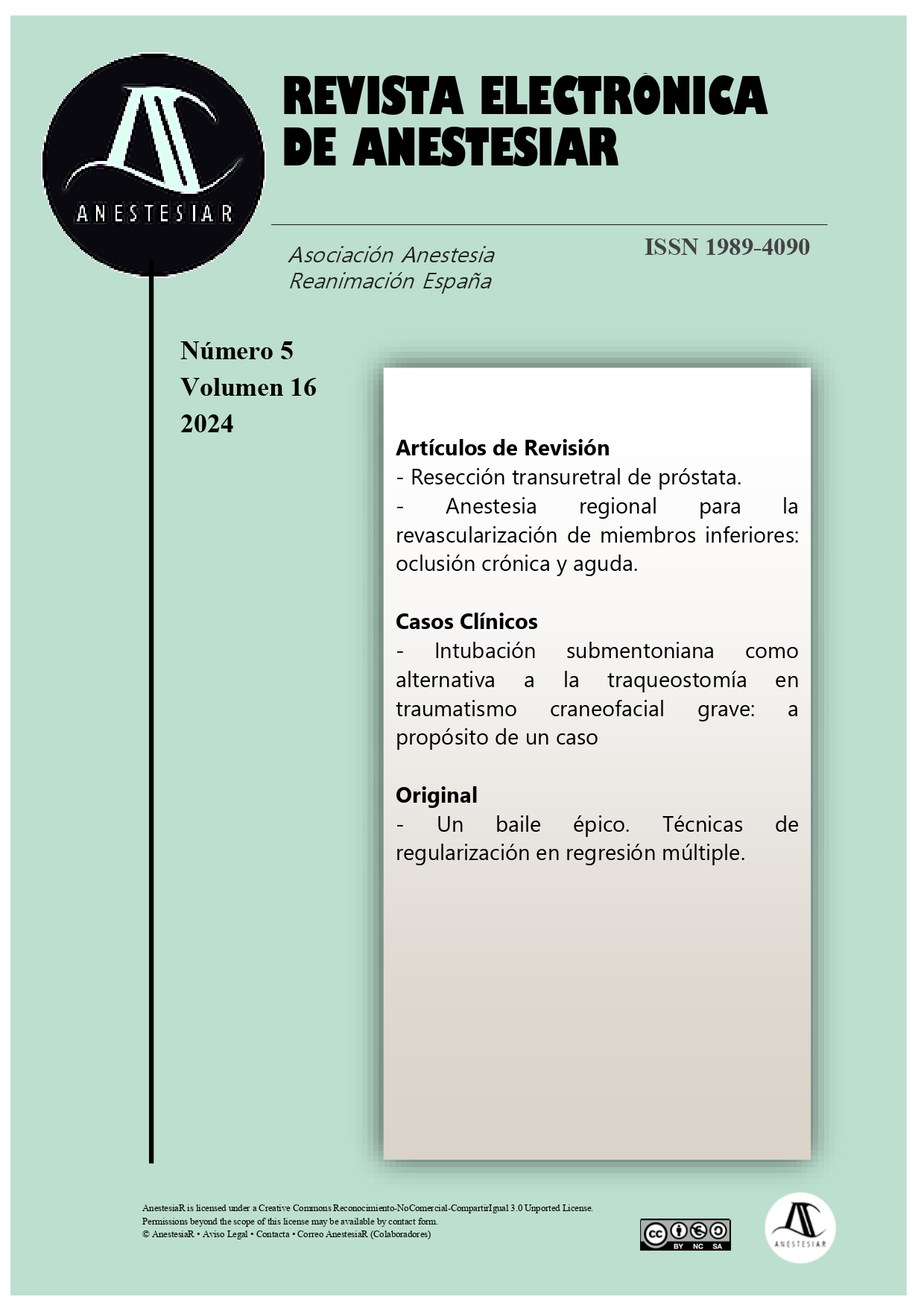Anesthesia for lower limb revascularization (chronic and acute occlusion)
Regional techniques
DOI:
https://doi.org/10.30445/rear.v16i5.1202Keywords:
anesthesia, vascular surgeryAbstract
The vascular surgery patient is generally a polypathological patient. For this reason, at the Getafe hospital we perform the anesthetic technique that interferes the least with their pathologies and affects their comorbidity to a lesser extent.
For this reason, the anesthetic technique of choice for lower limb revascularization is neuraxial anesthesia or local anesthesia, combined with sedation to make the patient more comfortable, whenever possible.
References
- Hoving Chitilian, MD. Anesthesia for infrainguinal revascularitazion. UpToDate. 2021 Dec 8. Available from: www.uptodate.com
- Arash Fereydooni, MS et al. Use of neuroaxial anesthesia for hybrid lower extremity revascularization is asociated with reduced perioperative morbility. Journal of vascular Surgery.2020Apr4; 71(4):1296-1304.Available from: https://doi.org/10.1016/j.jvs.2019.07.072
- Kontopodis N et al. The use of the local antesthesia to perform lower limb revascularization in the fragile patient with critical limb ischemia. Journal of the Italian Association of Hospital Surgeons. 2018 Mar-Apr; 39 (2): 77-81. Available from: https://pubmed.ncbi.nlm.nih.gov/29694305/
- Guzmán E, Carmona A, Baca Y. Tema 45: Preparación, anestesia y reanimación en cirugía vascular. Madrid: Formación anestesia; 2016. P:23-26
Downloads
Published
How to Cite
Issue
Section
License
Copyright (c) 2024 Revista Electrónica AnestesiaR

This work is licensed under a Creative Commons Attribution-ShareAlike 4.0 International License.
 Envío y derechos de autor
Envío y derechos de autor


 Revista Electrónica AnestesiaR by
Revista Electrónica AnestesiaR by 